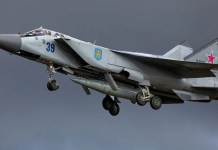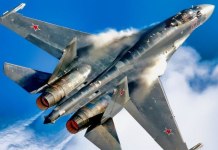Images of the World War II-era T-34 battle tanks being used in Yemen have surfaced on social media. The T-34 medium tank was developed by the erstwhile Soviet Union.
It was introduced in 1940 amid World War II and was used by the Soviet Red Army against German occupation forces as a counter to ‘Operation Barbarossa‘.
The T-34 holds a special place in history as one of the best tank designs during World War II. It has inspired a huge family of tanks in the Russian industry.
Its being Used in Yemen Too pic.twitter.com/QWZuMDmWyP
— ⚔️??ناصر??⚔️ (@QTR1994N) March 12, 2021
In the USSR, the production of these tanks was halted in 1945. However, it was continued to be produced in Czechoslovakia (now the Czech Republic) until 1958. These tanks proved their mettle as they helped the Soviet troops stop the German advances and drive the Soviet war machinery on the Eastern Front.
The T-34’s grand show was seen at the Battle of Kursk when the Red Army stopped a pincer movement from the desperate German forces to gain a foothold in the area. The tank was called one of the best designs of the war encompassing a balance between the aspects of mobility, weight, armor, and firepower.
While these tanks could not withstand a direct hit from a German Panther or a Tiger, the sloped armor along with lighter weight and better suspension made it a mobile platform with a 76.2 mm main gun (more powerful than its contemporary counterparts).
After the Germans encountered the tank in 1941, German general Paul Ludwig Ewald von Kleist called it “the finest tank in the world” and Heinz Guderian affirmed the T-34’s “vast superiority” over German tanks.
In July 1941, OKW (the High Command of German Armed Forces) chief Alfred Jodl noted in his war diary about this “wonder-armament being unleashed against the German assault divisions.”
Until 2018, there were nine countries that maintained T-34s in their military inventories — Cuba, Yemen, the Republic of the Congo, Guinea, Guinea-Bissau, Namibia, North Korea, Laos, and Vietnam. Of these, Vietnam possessed the largest known surviving fleet of T-34 series tanks, with 45.
Bosnia-Herzegovina possessed 5, Yemen 30, Guinea 30, Guinea-Bissau 10, Mali 21, and Laos 30. It was unclear how many Cuban and North Korean T-34s remained in service. All the Congolese, Namibian and Malian tanks were believed to be in reserve storage or inoperable.
In early 2019, the Laotian Army retired its T-34s and sold all of them to Russia, where they would be used for public displays and museum exhibits.





